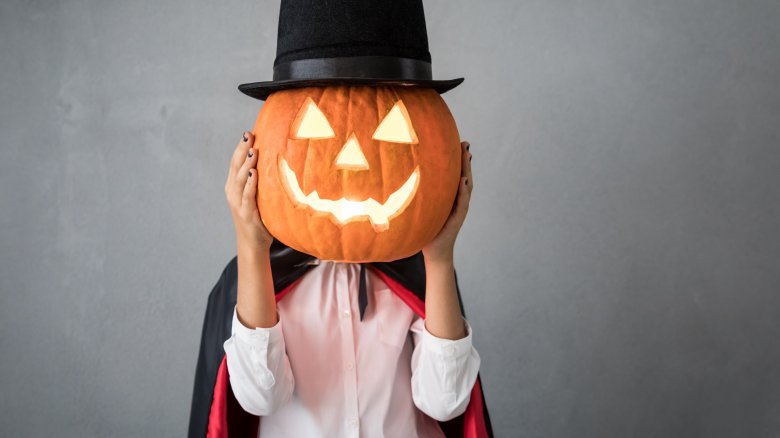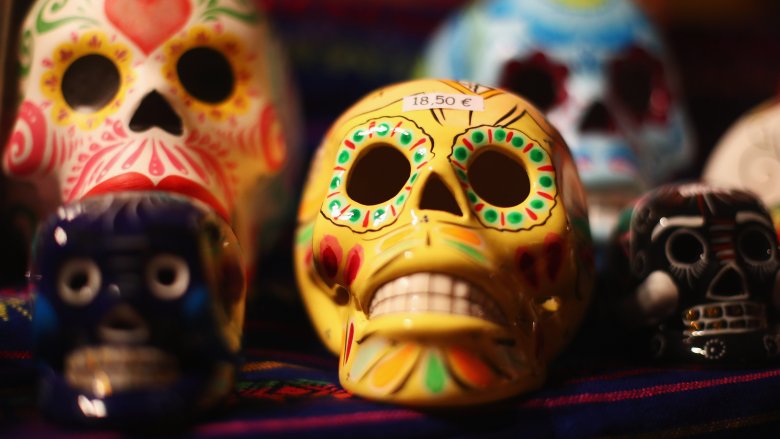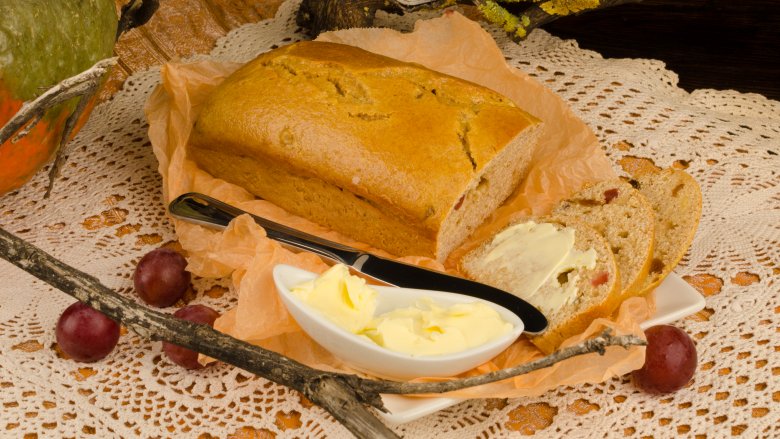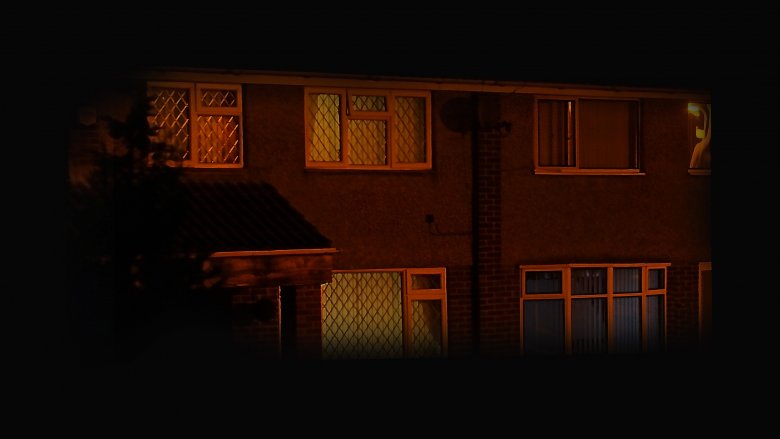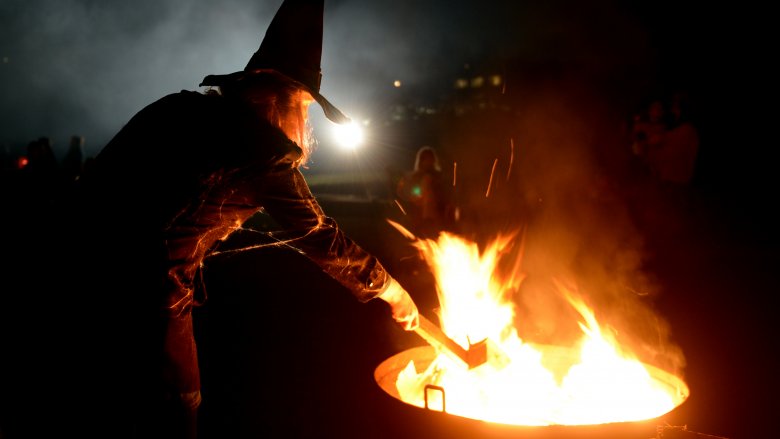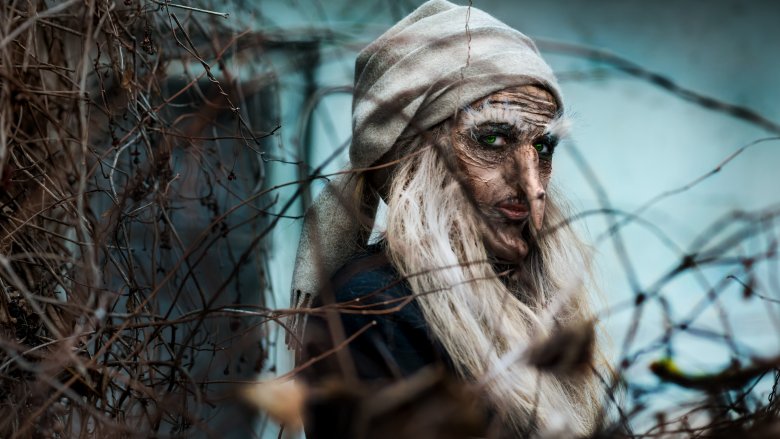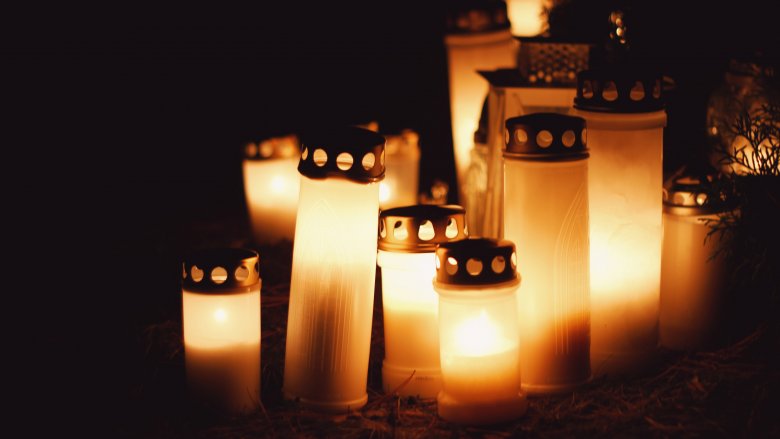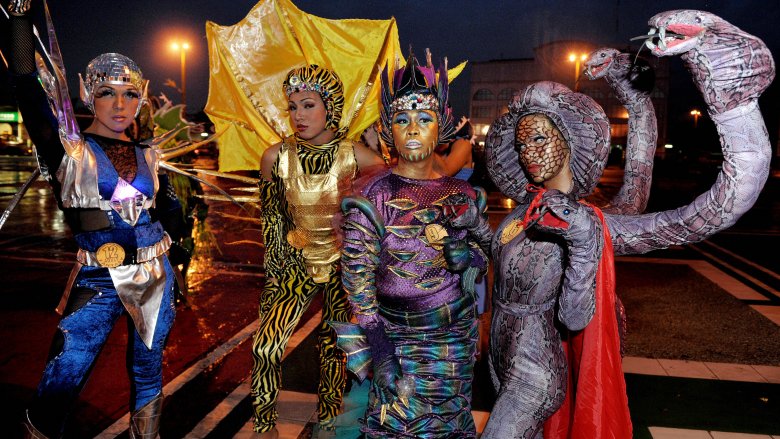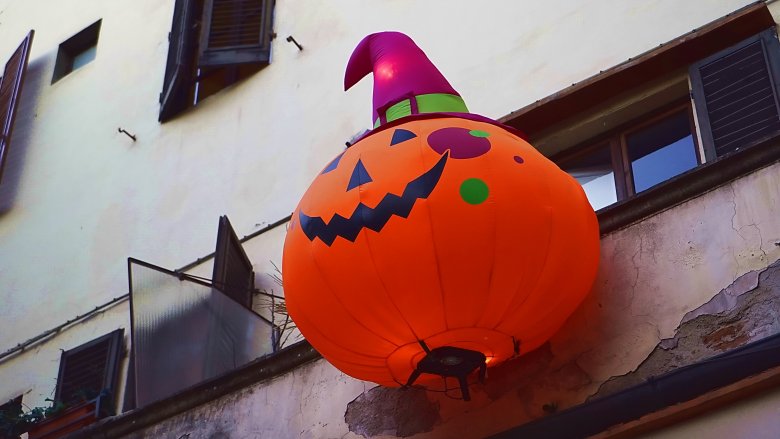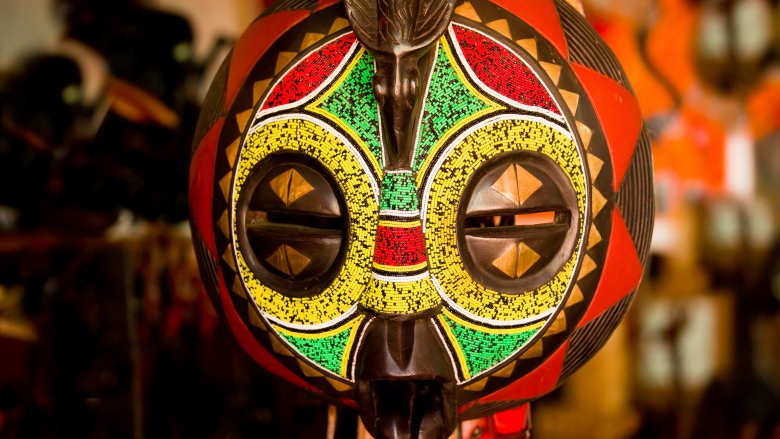10 Ways Halloween Is Celebrated Around The World
Some holidays are expensive, some are a chore, and some are just flat-out stupid. (Looking at you, Groundhog Day.) But there is one holiday that just about everyone can get behind, and if you can't, it's because you're a giant party-pooper with no sense of fun.
Halloween is not just an excuse to eat a ton of candy, although, it is totally that. It's also an opportunity to become anyone you want to be, whether it's the Queen of Dragons, a Weeping Angel, or someone's pet zombie. For American kids and adults alike, Halloween is liberating and transformative. But in other parts of the world, the spooky fall season and its holidays have a more serious and sometimes even spiritual meaning, although just about every culture has found a way to also incorporate a bit of fun. Not all these traditions are strictly October 31, so they might not technically qualify as Halloween — but the spirit (ghost?) comes from pretty much the same place.
By partying with 3-D representations of corpses
Dia de los Muertos originated in Mexico, and it's essentially one ginormous party in honor of the dead, much like Sunday nights on AMC except that Dia de los Muertos isn't losing as many fans.
Like the American version of Halloween, Dia de los Muertos has roots in both Catholicism and much, much older traditions. While Halloween is based on the old Celtic holiday, Dia de los Muertos incorporates Catholic tradition with Aztec ritual. According to NPR, pre-Columbian Aztecs traditionally gave offerings to their ancestors and deceased loved ones, then when the Catholics showed up they incorporated some of the practices of All Saints Day into their existing traditions.
On Dia de los Muertos, which takes place on November 1 and 2, celebrants will leave offerings on grave sites or elaborate altars they've created to honor deceased loved ones. That seems like kind of a somber practice, but that's where the seriousness ends. Celebrants believe the dead don't really want the living to spend all their time moping around and feeling sorry for themselves, so they throw a big party complete with food, treats, parades, and general revelry. Colorful images of the dead, called calacas and calaveras, are everywhere, and they're always depicted as enjoying the celebration. That's a huge departure from the American practice of dressing in black and feeling sad when we think of the dead. Wouldn't that be nice?
By baking choking hazards into cake
Halloween as we know it originated on the Emerald Isle, so it makes sense that it's still a pretty big deal there. According to Irish Central, in Ireland Halloween was originally known as Samhain, which does not, by the way, mean anything sinister like "Satan's Party," regardless of what those flyers you find in trick-or-treat bags might be trying to say. "Samhain" actually means "end of summer," which is totally boring compared to "Satan's Party," so it's no wonder that anti-Halloweeners usually try to spice it up. Anyway, Samhain is the night when the spirits of the dead return to Earth, and since the Celts were pretty sure not all spirits had good intentions, they would light bonfires and dress in costumes to frighten away the evil ones.
Today's Irish still light bonfires on Halloween, and they still wear costumes. The Irish have a few other traditions all their own, too — they have colcannon for dinner, which is basically mashed potatoes and cabbage, and they serve up barnbrack for dessert, which is something like a Christmas fruitcake only full of extra horrors. When you eat your piece of barnbrack, you might find a surprise inside — if you're lucky enough to get a coin or a ring it means different kinds of good luck, but if you find a rag or a thimble it means bad finances and never marrying. And to think there are still people who believe scary costumes are bad for impressionable young minds!
By hiding inside your darkened suburban home
In England, Halloween is a halfhearted affair. Traditionally, kids bob for apples and make jack-o-lanterns out of rutabagas and turnips because the grosser your vegetables are the better they are at warding off evil spirits. (Not really — it's actually because pumpkins weren't really a thing in the U.K. until recently.) According to Historic UK, the tradition of trick-or-treating is a modern American import, which is cool with English children, but not so much with adults. A 2006 survey found that about half of British homeowners celebrate Halloween by turning off the lights and hiding in the shadows, not because they want to scare anyone but because they hope trick-or-treaters will fail to notice them and go away.
British Millennials are more into Halloween than their Gen-X predecessors — parties are definitely on the uptick, and some people worry Halloween might eclipse Guy Fawkes Day on November 5. If you're not familiar with Guy Fawkes Day, it's where Brits get together and burn stuff in celebration of the foiling of the Gunpowder Plot, a 17th-century conspiracy to blow up Parliament. No one should ever come between a pyromaniac and his or her burning effigy, but there's probably more to the English dislike of Halloween than just a preference for fire. James Sharpe from the University of York told Smithsonian that Halloween is an example of "U.S. cultural imperialism," which is pretty rich coming from the tiny nation that once ruled 25 percent of the entire world.
By having parties and offending the church
Some people love candy corn and some people think it's the worst thing ever. You're never really neutral about candy corn. One thing is for sure, though, we can thank the Germans for candy corn. Candy corn was the brainchild of two German immigrants who founded the Goelitz Confectionery company in the 1880s. (Ironically, Goelitz then went on to invent Jelly Bellies, which never end up in trick-or-treat bags because they're so danged expensive.)
Anyway Germans do more than just sit around eating candy corn on Halloween. "Pumpkin festivals" are a big deal there, though they're really more like an American harvest festival than a nod to our favorite ghostly holiday. Most of what Germans do on Halloween itself is imported from America and wasn't really a thing before the 1990s. A few kids trick-or-treat, but Halloween is mostly an excuse for young adults to throw parties. That's much to the shagrin of older Germans, who still celebrate the Protestant holiday Reformation Day on October 31, which is at significant odds with all the ghosts and goblins of Halloween.
A few older traditions persist — for example, the Telegraph says some Germans will stash their kitchen knives away on Halloween night, just in case a spirit shows up and accidentally cuts itself because apparently that can happen to someone who does not exist on the corporeal plane.
By telling spooky stories and offending the church
When the Soviet Union fell, Russians got access to a lot of great things that had never before been available to them, like ketchup and religion. According to Russia IC, Halloween might have been introduced to Russians as a side effect of English language programs in schools — kids were sometimes encouraged to read about American Halloween traditions as a fun way of learning and using the English language, and then at some point that turned into school-wide Halloween parties, and then eventually Halloween leached out into the rest of the country to annoy parents and Russian leaders forevermore.
Unsurprisingly, Halloween is most popular amongst young adults, and Russian nightclubs almost always make a big deal out of it with Halloween themed parties, treats, and costume contests. Russians have also managed to work their own traditions into the holiday — Russian fairy tales are downright terrifying, so it seems pretty natural they'd find a place in the Russian version of Halloween.
And because it wouldn't be Halloween without someone complaining about evil influences, Halloween gets banned all the time by Russian religious groups, mostly for being "a negative influence on fragile minds." Let's face it, anyone who disagrees was clearly not present for Halloween 2014 when every first grade girl was dressed like Elsa from Disney's Frozen.
By lighting candles in graveyards
Americanized Halloween hasn't reached all four corners of the globe (yet). There are lots of places in the world where they still celebrate All Saints Day or something very similar without also incorporating the costumes, fake gore, and candy that are so beloved in the United States.
According to PragueGo, in the Czech Republic, the holiday is called "Dusicky," which means "Little Souls," and it's celebrated two days after Halloween, on November 2. It's similar in spirit to Dia de los Muertos in that the spirits of the dead are considered honored guests, though Czechs do seem to draw the line at wild parties and calaveras. Czech celebrations take on a more somber tone: At home, Czechs might put out one chair for each deceased family member, in the hope that their spirits will join the family for the evening. They will also visit the graves of departed loved ones, leave flowers and candles, and sometimes drink a shot of alcohol in honor of the dead. Visiting a candle-lit Czech cemetery on Dusicky is a profound experience and really the opposite of what you'd ordinarily expect from a cemetery on Halloween.
That doesn't mean Halloween isn't still trying to influence the fragile minds of Czech children — just as in Russia, Czech children who are studying English often have Halloween lessons to make the language-learning stuff a little more fun. Sometimes you'll see people in costumes wandering the streets on Halloween, and maybe even the occasional jack-o-lantern.
By eating French fries covered in horrors
Unlike some cultures, the Japanese don't usually shy away from Americanized anything. It did take them a while to really get the hang of Halloween, though.
According to Kotaku, the Japanese have a traditionally spooky season, too, but it happens a few months before Halloween — it's called Obon, and it's pretty similar to all those other day of the dead type celebrations. During Obon, people may travel long distances to tidy up the gravesites of deceased loved ones, and the spirits might in turn visit household shrines, where relatives have left offerings of fruits, vegetables, and flowers. Obon isn't just a time for somber reflection, though. The Japanese also like to tell scary stories — like poop your pants, cover up the children's' ears sorts of scary stories. So really, if you're going to get the kids involved with the spooky stuff, you sort of need to give them their own version of Obon, and that's probably one of the reasons why Halloween has finally started to gain some ground in Japan.
And because Japan always has to put its own distinctly Japanese twist on everything (as it should be), you can add McDonald's Halloween fries with purple yam and chocolate sauce to the list of uniquely Japanese traditions, which is actually almost as scary as a Japanese ghost story.
By singing and asking for cash
Filipinos celebrate Halloween like a lot of other cultures do — as a semi-adopted version of the American holiday, combined in a superficial way with their own version of the Day of the Dead (called Undas). In the Philippines, Halloween parties are mostly a thing in workplaces, where adults dress in costumes and engage in fun, extremely non-productive Halloween-themed activities. But at home, Filipinos are a little more serious, mostly because Grandma keeps saying something bad might happen if they don't behave.
Filipinos do have their own version of trick-or-treat, though it's now considered a dying tradition. According to the Philippine Daily Inquirer, "Pangangaluluwa" is the rural practice of going door to door, but instead of just saying "trick or treat," you have to put on an entire musical performance. And homeowners don't fill your bag up with candy but with cash. Sounds okay!
Most of the participants wear costumes, just like American trick-or-treaters, and they're usually young adults. Unfortunately the tradition lives on only in a few communities — elsewhere, younger children have figured out that they can wear costumes and go door to door, too, and candy is usurping cash as the typical Halloween currency. Oh well. It was profitable while it lasted.
By throwing giant parties and lighting bonfires
The Italians have a direct line to the old Celtic tradition of Samhain — they were the conquerors who brought Christianity to Britannia, so they witnessed the origins of modern Halloween. According to Italy Magazine, November 1 was designated All Saints' Day in the eighth century, then a few hundred years later the Catholic church decided it also needed an All Souls Day on November 2 in honor of the dead, not because it actually thought the dead needed honoring or anything but because it was annoyed that the Celts still insisted on throwing a Samhain-like festival on October 31.
Old traditions are difficult to snuff out, though, and they have a habit of migrating from one culture to another, especially if they're super cool. All Hallows' Eve eventually made its way from Britannia to Rome, and it's still celebrated in Italy today. But while American Halloween is mostly costumed kids trick-or-treating and elaborate Halloween displays in storefronts and suburban neighborhoods, Italy has some really big festivals from Halloween to All Souls Day. In Triora, townspeople dress as witches to remember the witch trials of 1587 to 1589. In Borgo a Mozzano, Lucida Mansi walks through the town with the devil and an entourage of demons. If you're not into big, elaborate festivals, you can light a bonfire in your front yard — this tradition is said to help lead the spirits of the dead home.
By putting up with spirits who don't know when its time to leave
For the Igbo people in Nigeria, the dead don't just come back for a day. No, they totally overstay their welcome, hanging around for six months, eating all the household offerings, and not paying any rent. Happily, the Odo Festival in their honor only happens once every two years, so it's not like Nigerians have to spend half their lives begging the dead to please just go out and get a job, already.
The spirits of the dead arrive around Halloween, though one Nigerian website says they can make an appearance any time between September and November. Called "Odo," the dead actually have a physical presence during the festival — they are played by anonymous, all-male members of the "death cult society." The Odo wear elaborate masks and are welcomed back with a celebration before returning to the homes they lived in, where they receive food and gifts. Then the party begins, with music, food, and performances by the Odo characters that go on more or less nonstop for literally months at a time. Just before the Odo leave in the spring, they reenact the story of their time among the living on a stage in the town square. Then the townspeople get 18 months to recover from the festivities before it starts all over again.
